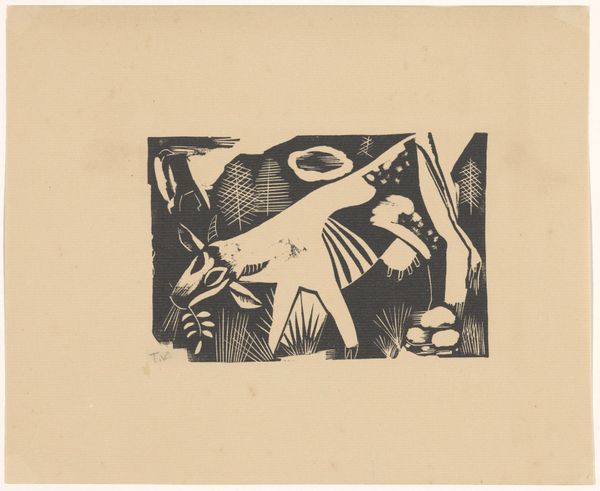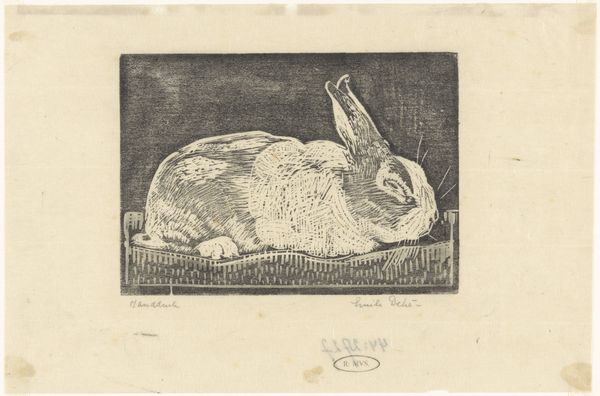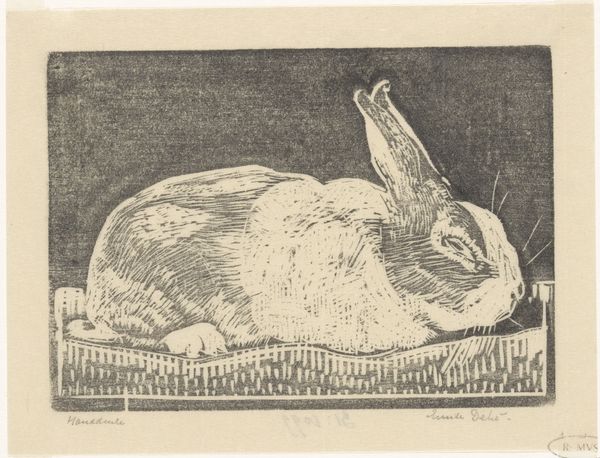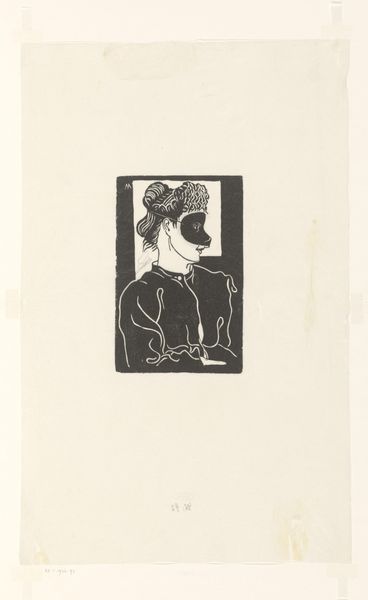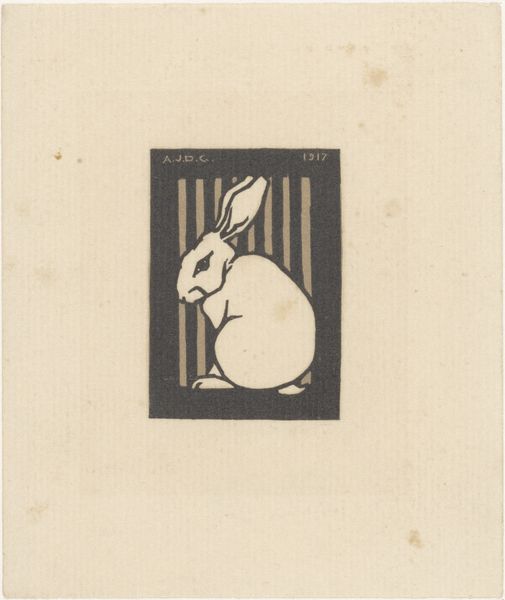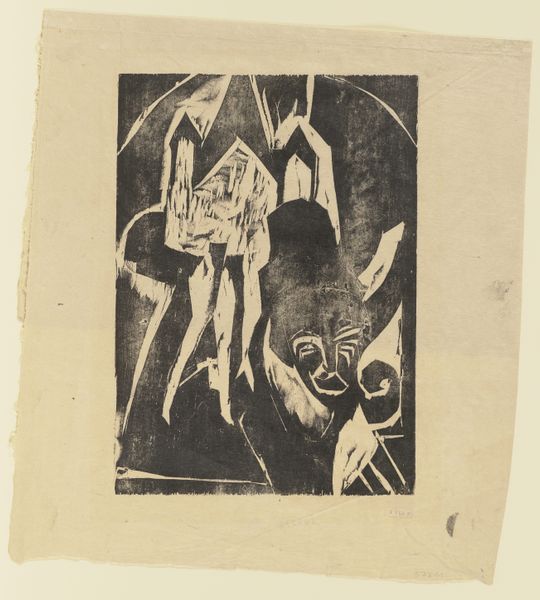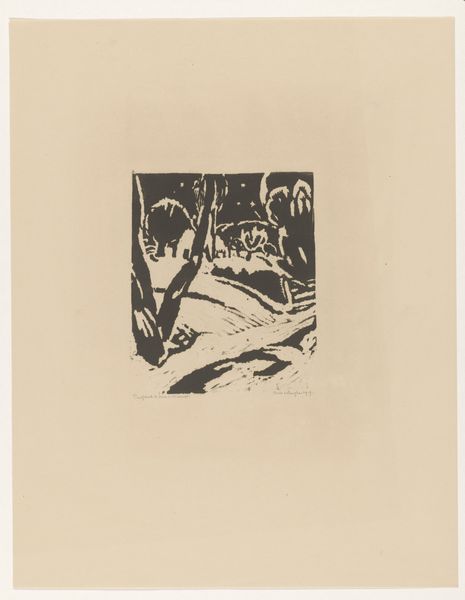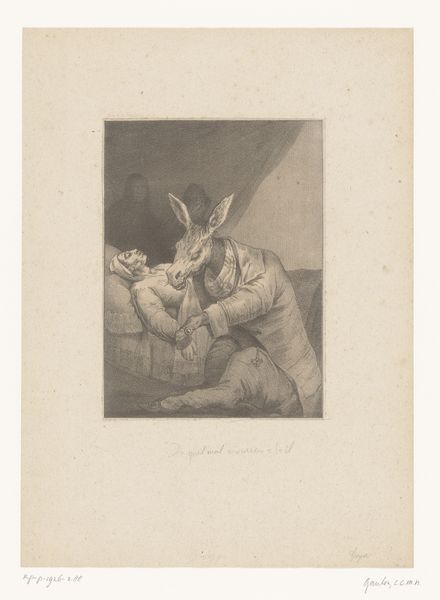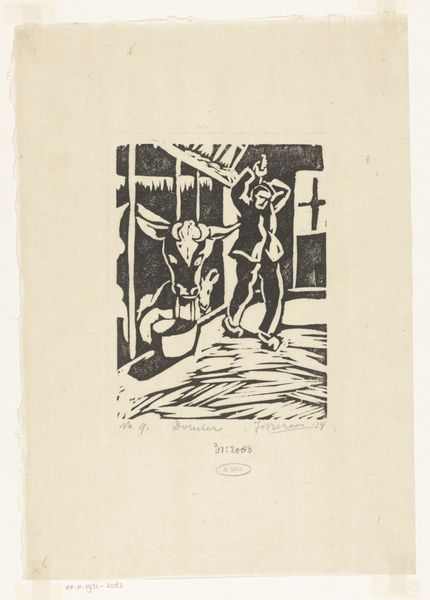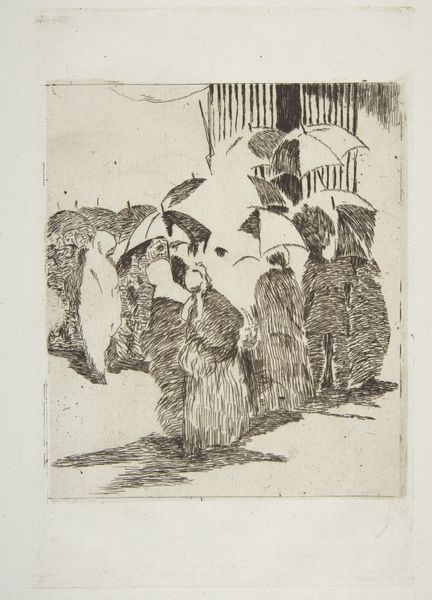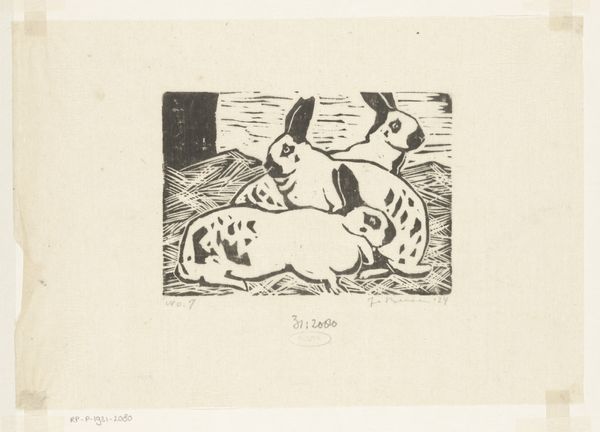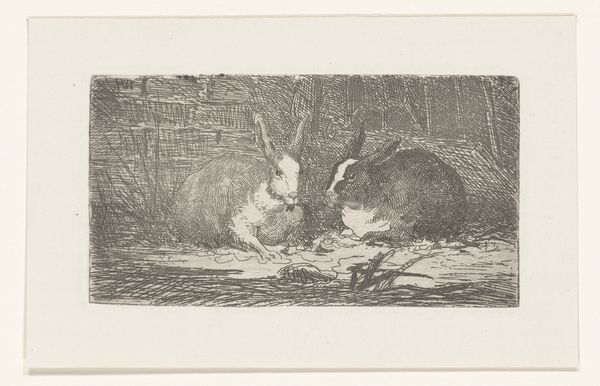
Dimensions: 12 15/16 × 9 1/8 in. (32.86 × 23.18 cm) (image)
Copyright: Public Domain
Henri-Charles Guérard made this print called 'Les Lapins' – Rabbits – using etching in France. The image has a stark duality in black and white. Rabbits, often symbols of fertility and vulnerability, sit together but are distinctly different in colour, raising questions about representation and contrast within society. The black and white colors may also nod to the emerging technologies of photography and printmaking. Guérard was the son-in-law of art printer Auguste Delâtre, a champion of etching as a fine art. This was a time when printmaking was gaining recognition, but also grappling with its role in a changing art world. Was it merely reproductive, or could it stand alone as a form of artistic expression? Delving into the institutional history of printmaking in France, as well as details of the artist's life, will allow a far better understanding of this image. The meaning of art is contingent on its social context, something that a researcher can uncover.
Comments
minneapolisinstituteofart almost 2 years ago
⋮
Henri Guérard got a solid education in Japanese art when Louis Gonse chose him to illustrate some 200 objects for his L'Art japonais (1883). In 1890 when Guérard interrupted his career as a painter-etcher to explore woodcut, Hokusai's spare animal images were clearly on his mind. The power of this stolid pair comes from the stark light-dark silhouettes, overlapped shapes, minimal modeling, and brilliant use of the buff paper as a "color."
Join the conversation
Join millions of artists and users on Artera today and experience the ultimate creative platform.

